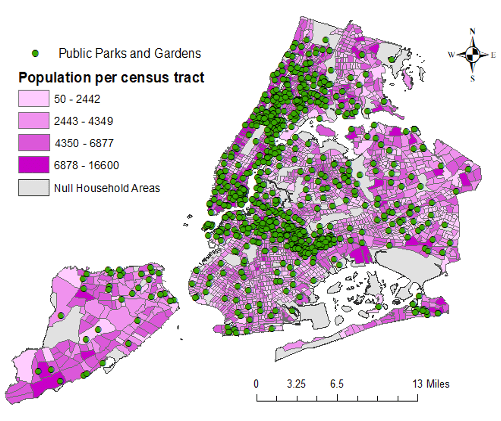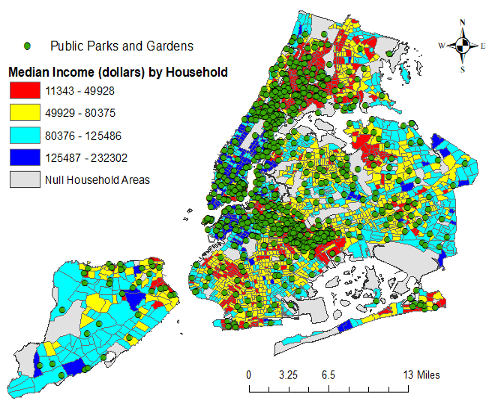Parks are a basic necessity for our health, but some residents have greater access than others

Mayor Adams has failed to follow through on his pledge to increase the New York City Department of Parks and Recreation budget to 1% of the city operating budget. He actually cut $63 million from the last budget adopted under Mayor Bill de Blasio from May 2021. The cuts come in the wake of the coronavirus pandemic that exposed New York’s park inequity. The proximity to green spaces has tremendous health benefits, both physical and mental for all residents of a city. Mayor Adams needs to be building more parks where new yorkers don’t have access to greenspace because parks are more essential now than ever before.
The World Health Organization, recommends that urban residents should be able to access public green spaces of at least 0.5-1 hectare within a 5 minute walk or 300 meters (0.2 miles approximately) of their homes. A study conducted in more than 1000 European cities found that almost 43,000 premature deaths could have been prevented each year if these cities had followed the World Health Organization’s recommendations for green space proximity for urban residents. As New York City is considerably more populous and dense than European cities, the lack of proximity to public green spaces has an exclusionary effect on the 550,000 people who suffer from ambulatory (difficulty in walking) disabilities and cannot easily walk to their nearest park.
Mapping New York’s parks lays bare some of these inequities. Queens, The Bronx, and Staten Island are underserved – they have 50% of the population but only 37% of the city’s parks.
Park Equity in New York City

| Borough | Number of Local Parks | Number of Flagship Parks | Average Distance to Public Parks and Gardens (miles) for Residential Buildings | Average Distance to Local Parks (miles) for Residential Buildings | Average Distance to Flagship Parks (miles) for Residential Buildings |
| Manhattan | 187 | 21 | 0.20 | 0.21 | 1.64 |
| Brooklyn | 271 | 5 | 0.33 | 0.33 | 2.62 |
| Queens | 114 | 6 | 0.48 | 0.50 | 2.26 |
| The Bronx | 116 | 7 | 0.58 | 0.61 | 1.34 |
| Staten Island | 33 | 1 | 0.70 | 0.73 | 3.20 |
On average, people live less than half a mile from a park in New York. But in Queens, The Bronx, and Staten Island people live considerably further away than they do in Manhattan and Brooklyn.

Park access also depends on your income, with lower income neighborhoods further from parks. Among local parks, are smaller neighborhood parks with small green spaces and a few trees compared to flagship parks that offer larger play areas for children, more recreational facilities, large green spaces and an abundance of trees, the same pattern holds. Manhattan and Brooklyn have more green space. For flagship parks, the disparities are even larger. The residents of Queens, Brooklyn, and Staten Island should not have to travel more than 2 miles to access large flagship parks and the residents of The Bronx and Staten Island should not have to walk more than half a mile to access local parks. Parks in low income communities are 2 times smaller than parks in affluent communities, and parks in majority Black communities are 4 times smaller than parks in majority white neighborhoods.
These dramatic disparities, paired with the lack of commitment from Mayor Adams on his parks budget increase, the recent budget cuts, and the importance of access to public green spaces post the COVID-19 pandemic, mean that the city needs to act. Mayor Adams’ failure to work towards park equity as he initially pledged has implications for all New York City residents, and many long term consequences: such as lower health outcomes and reduced standards of living across the city. An increased budget will not serve park equity by solely improving maintenance and expanding the existing parks; new parks must be built across the city to increase accessibility for all residents regardless of income, race, and physical ability.
You can reach the author of this piece, Ritwick Dutta, at: rd3203@nyu.edu
You can reach the editor of this piece, Patrick Spauster, at: ps4375@nyu.edu